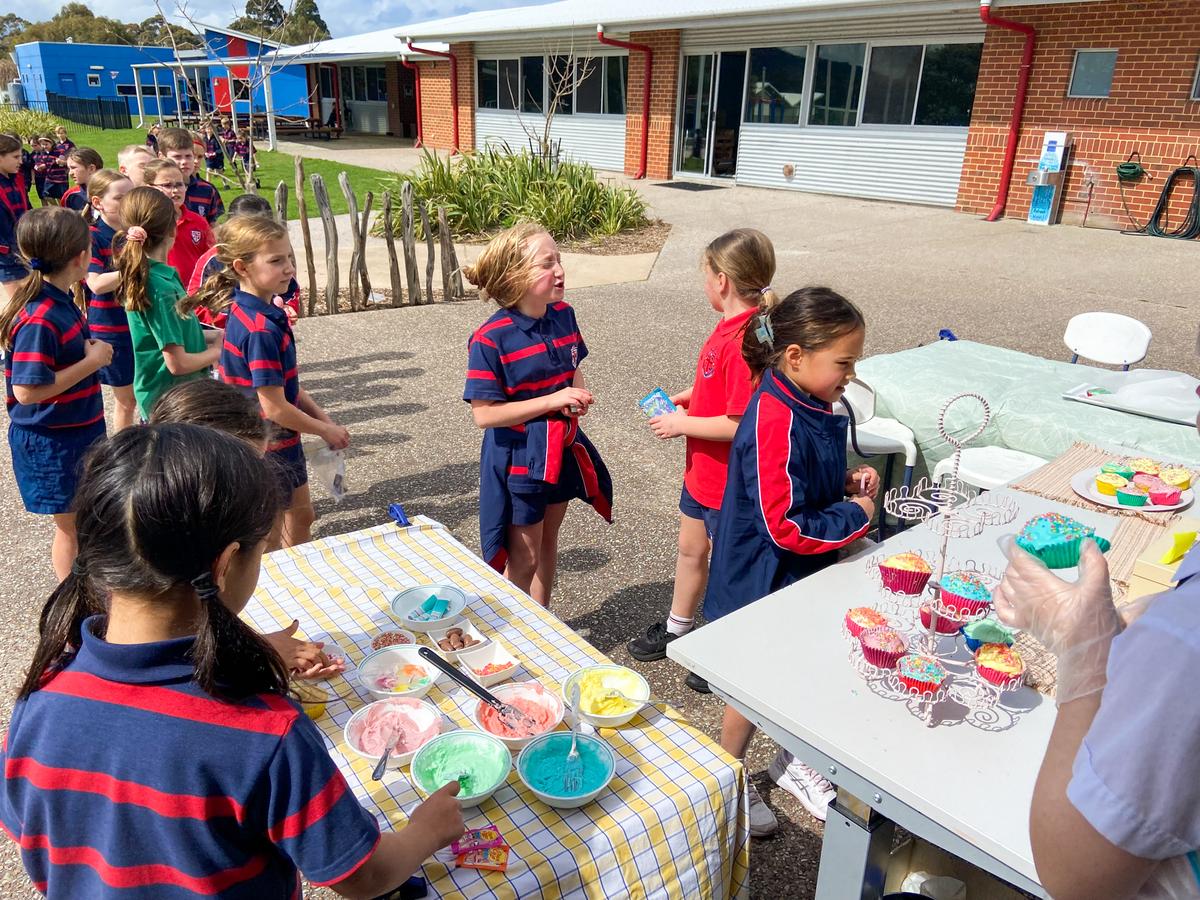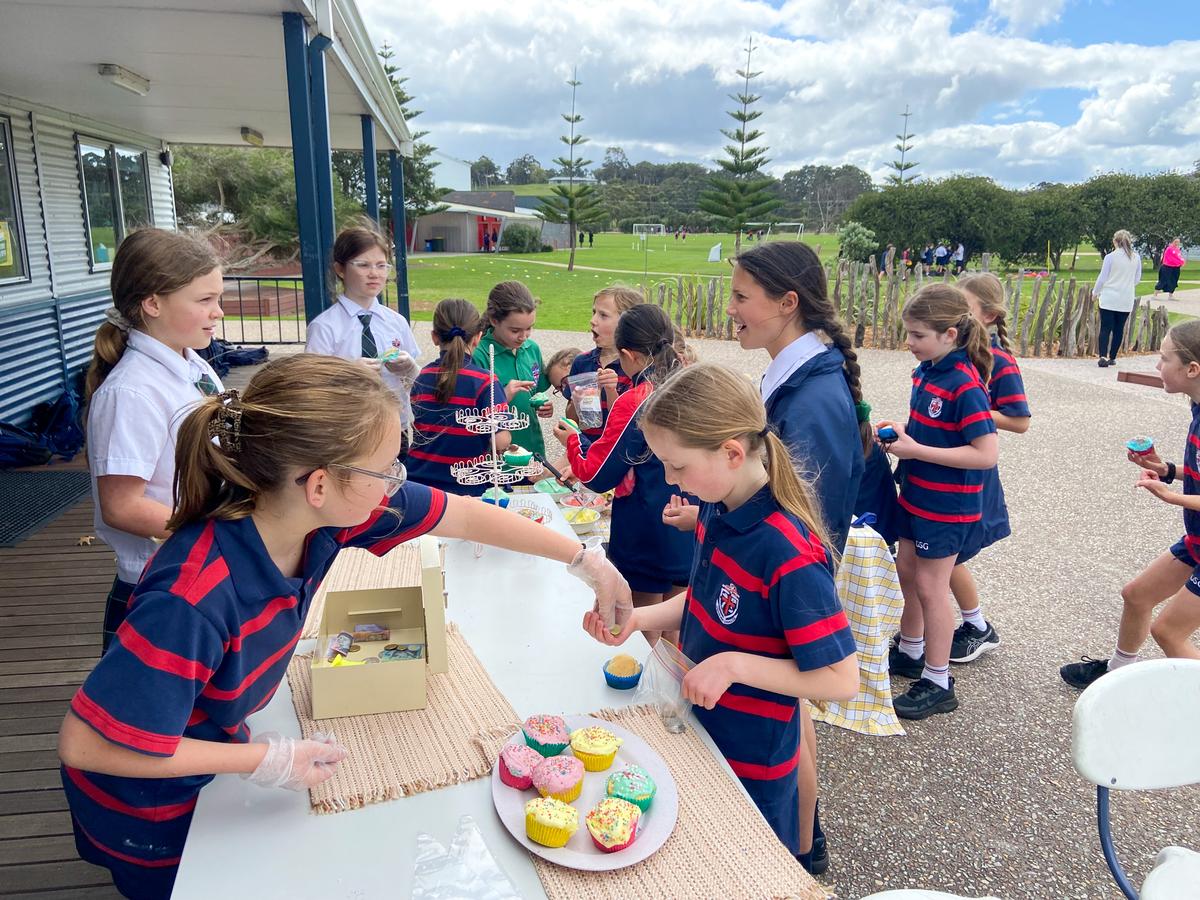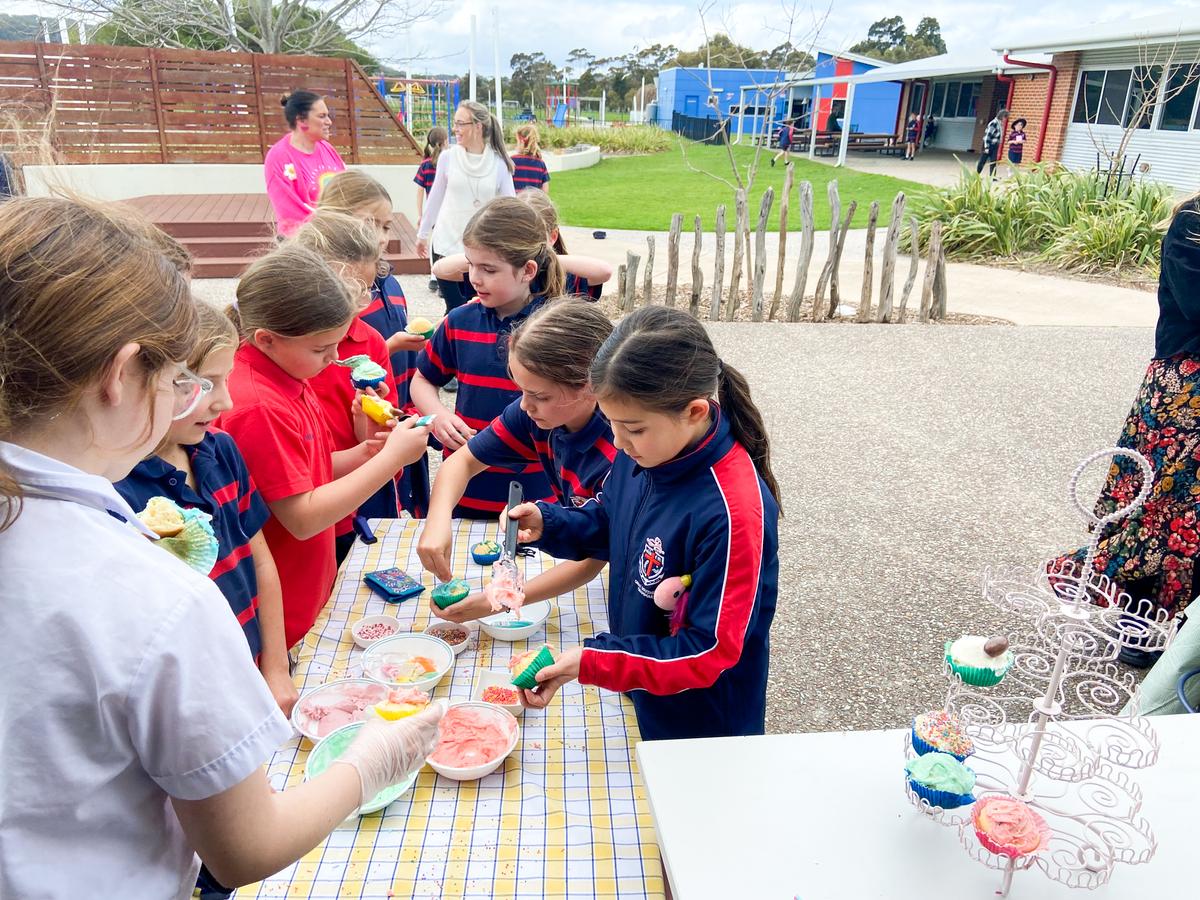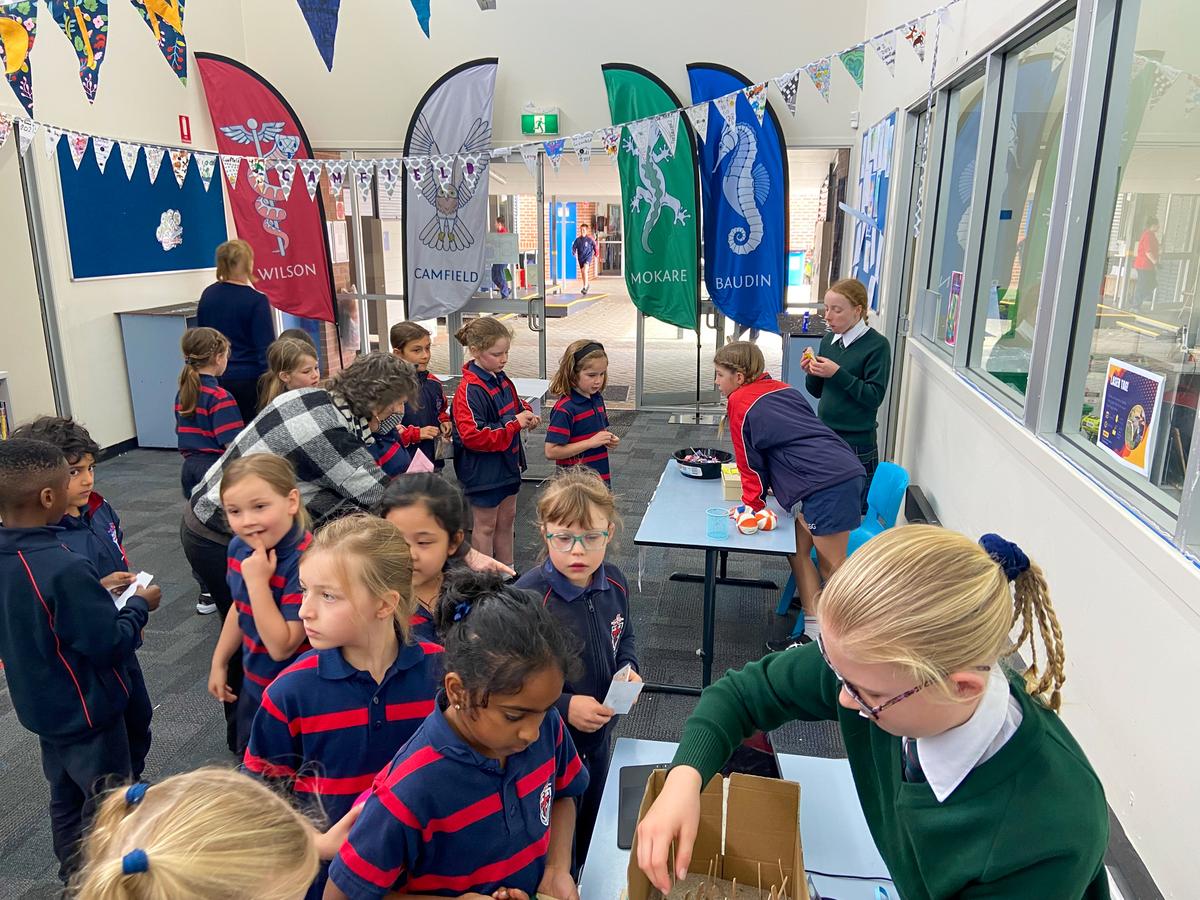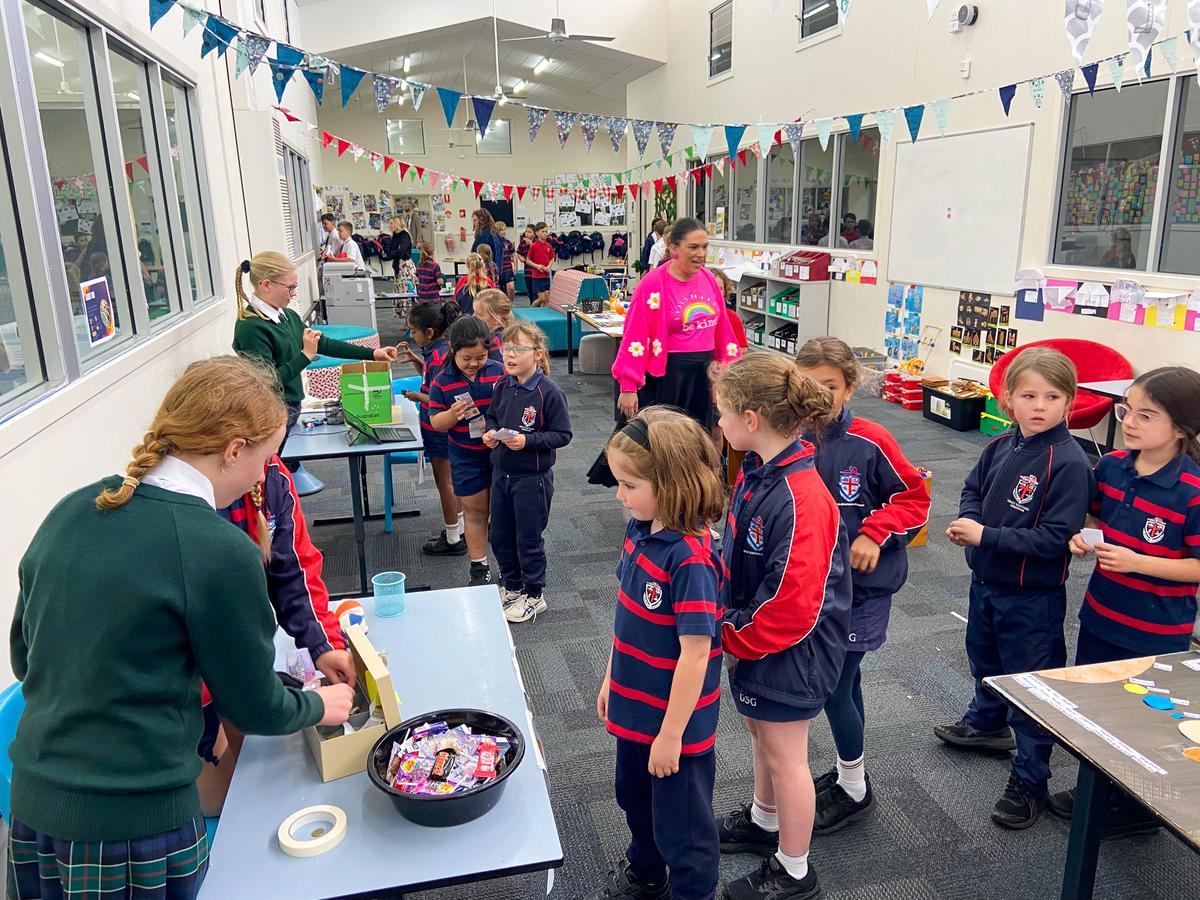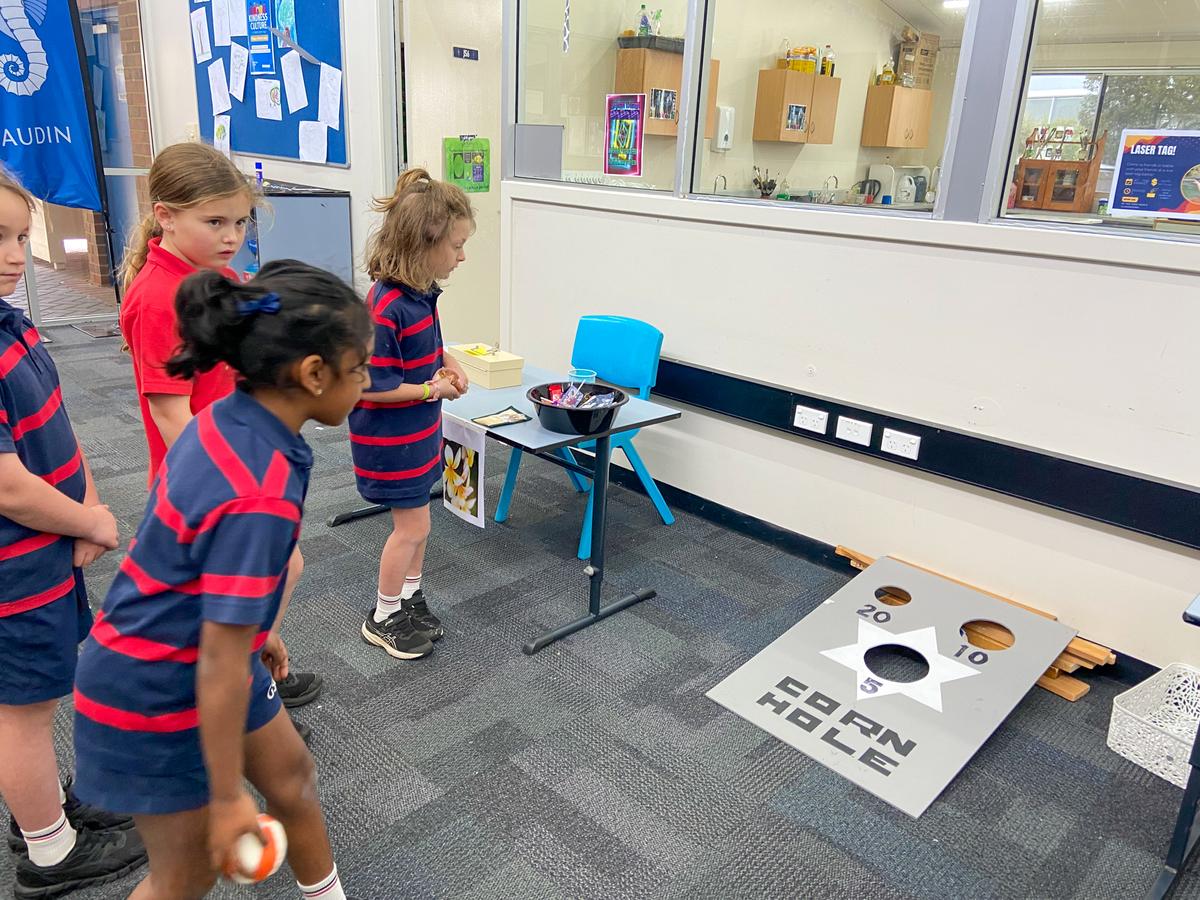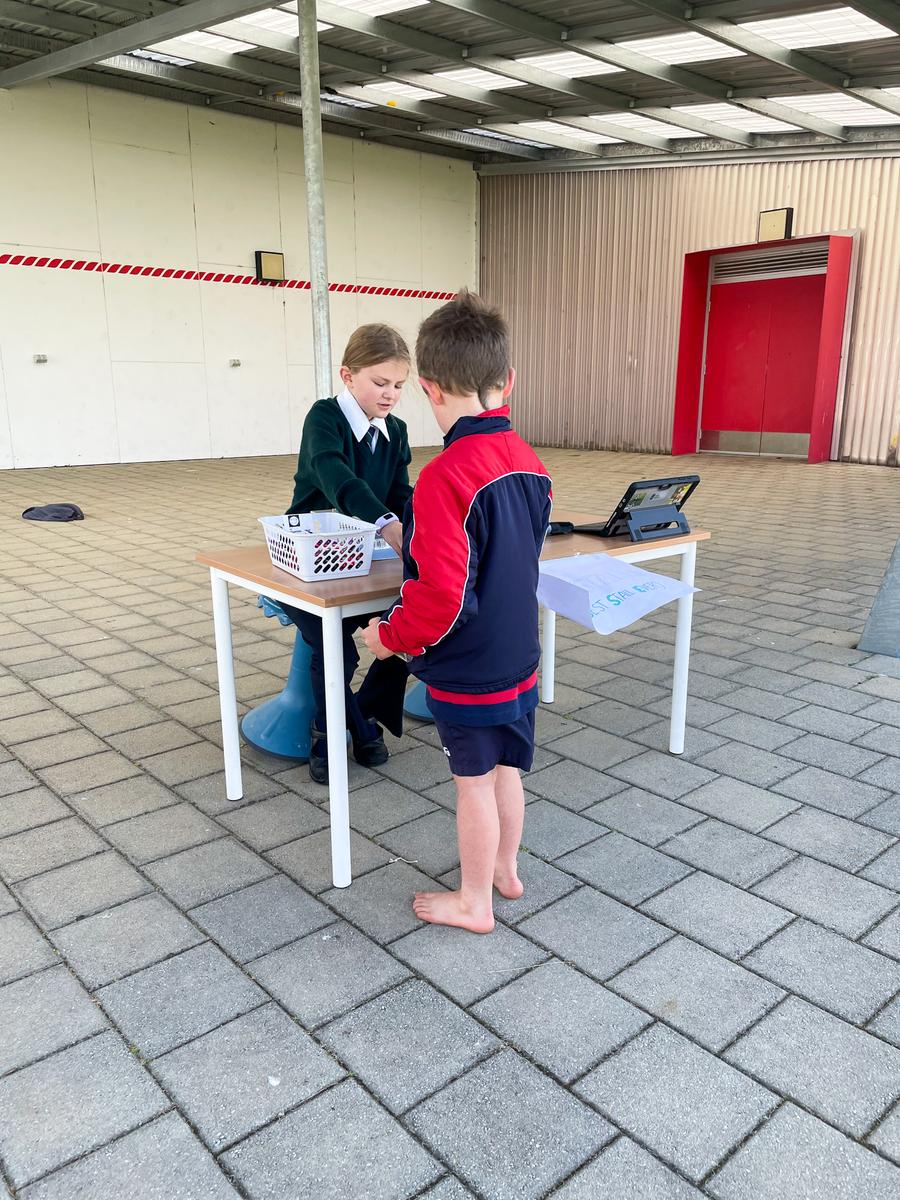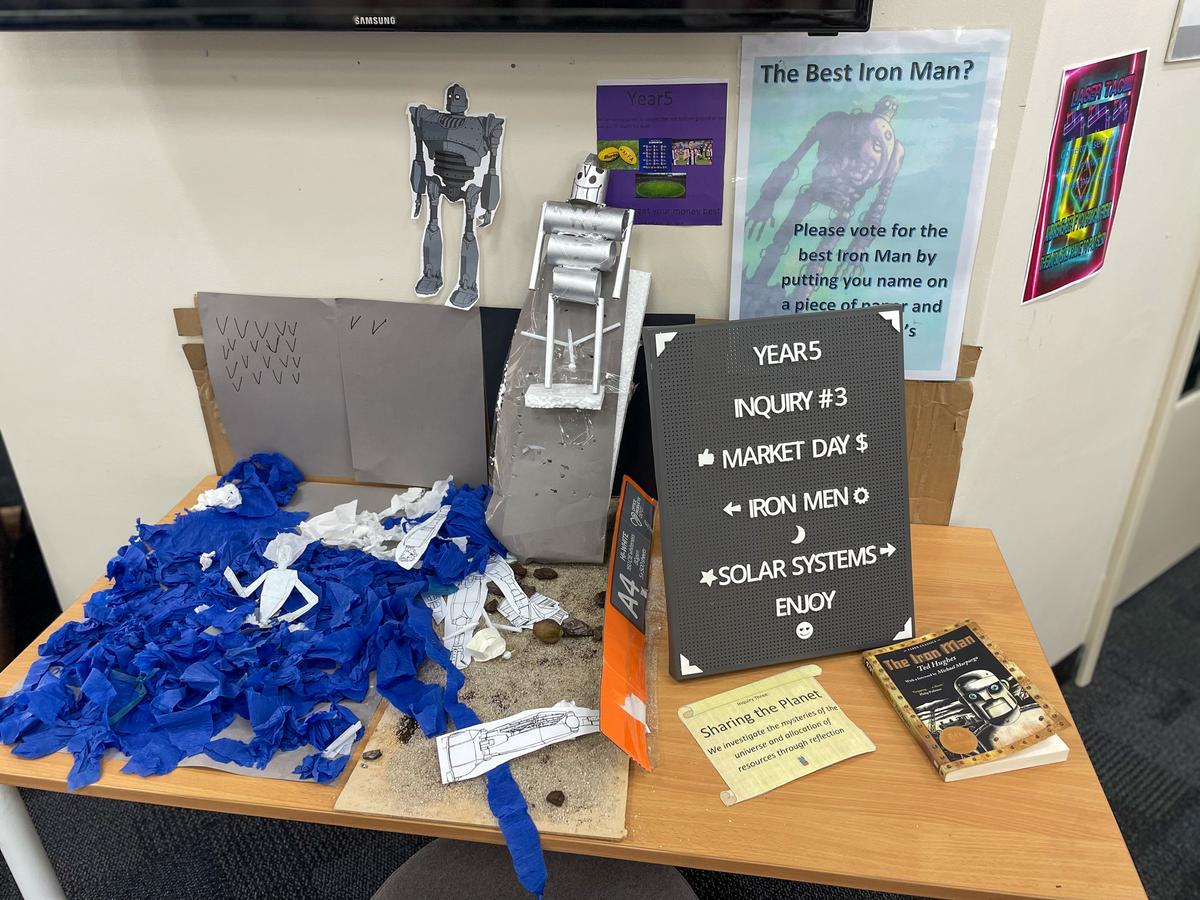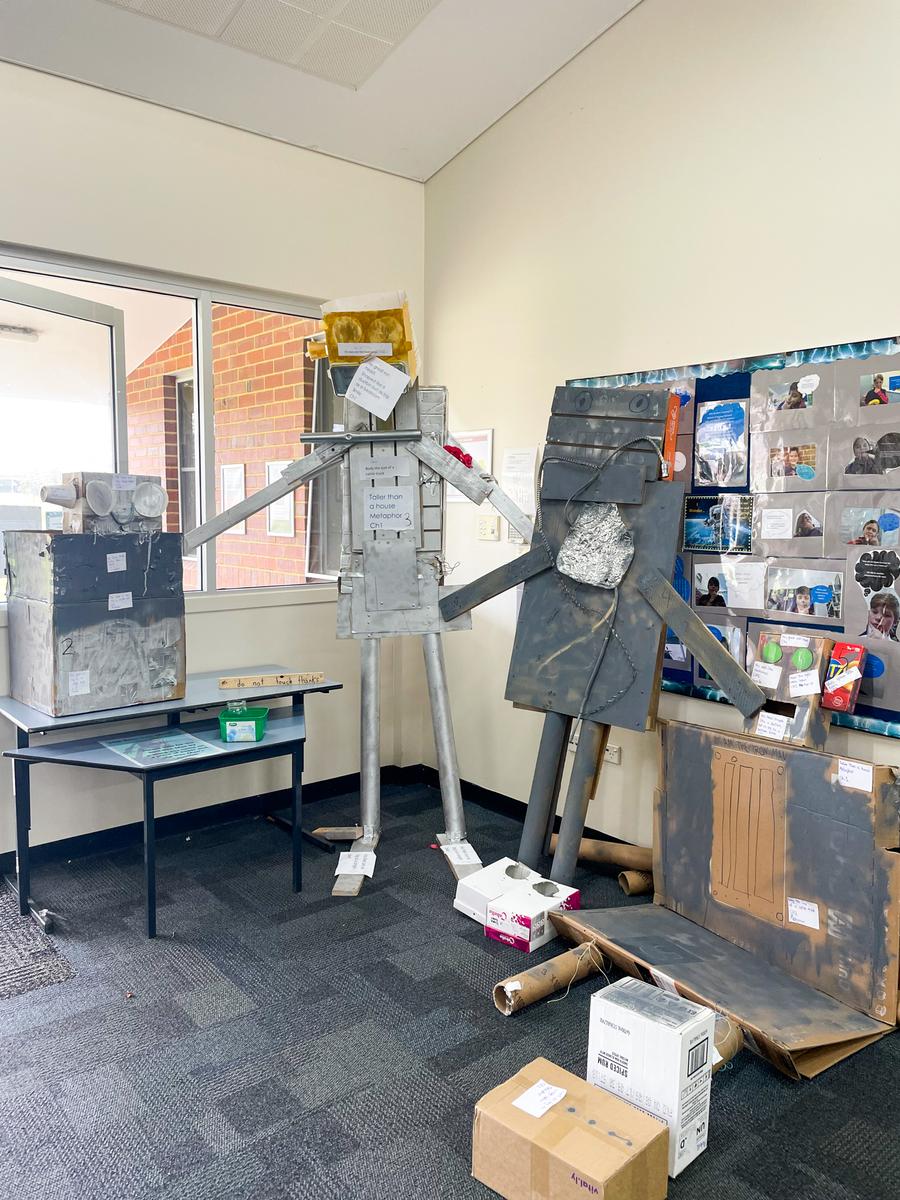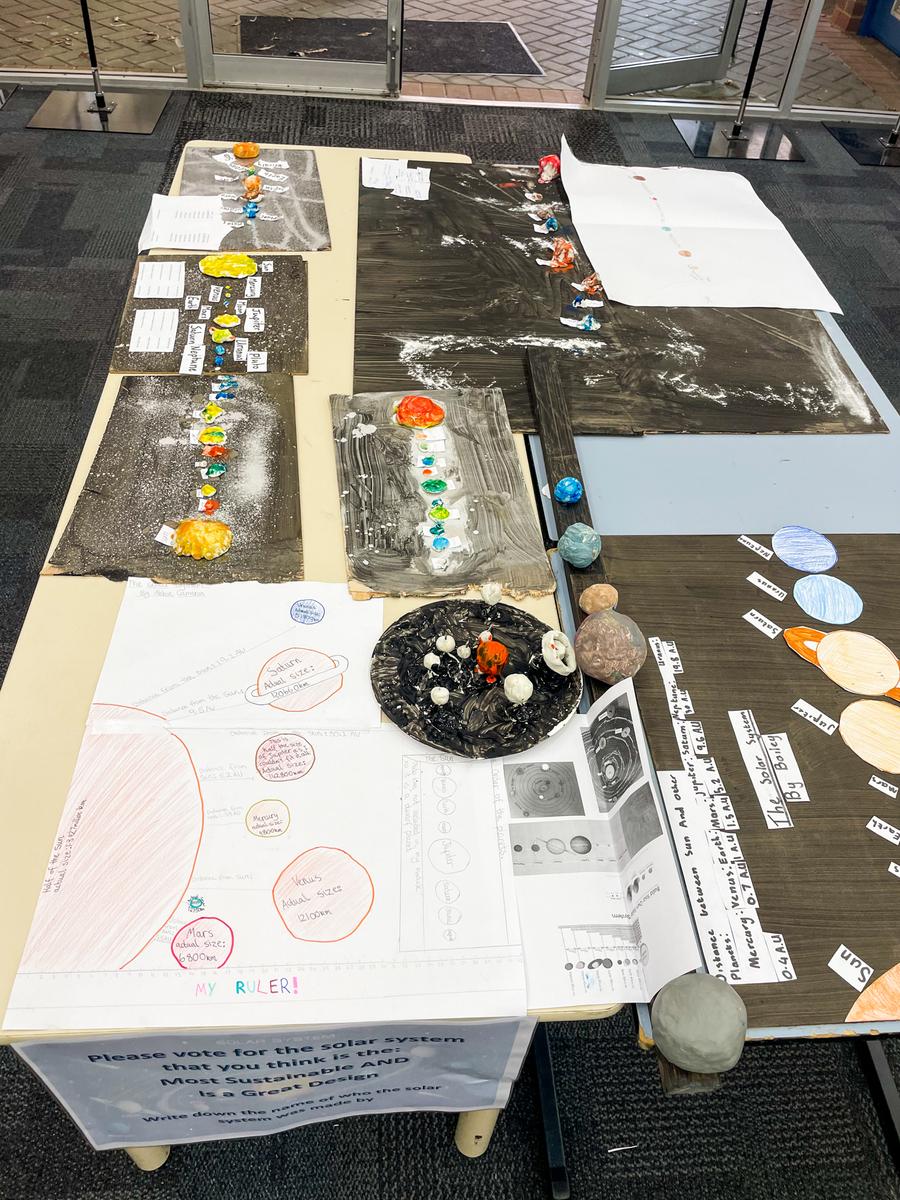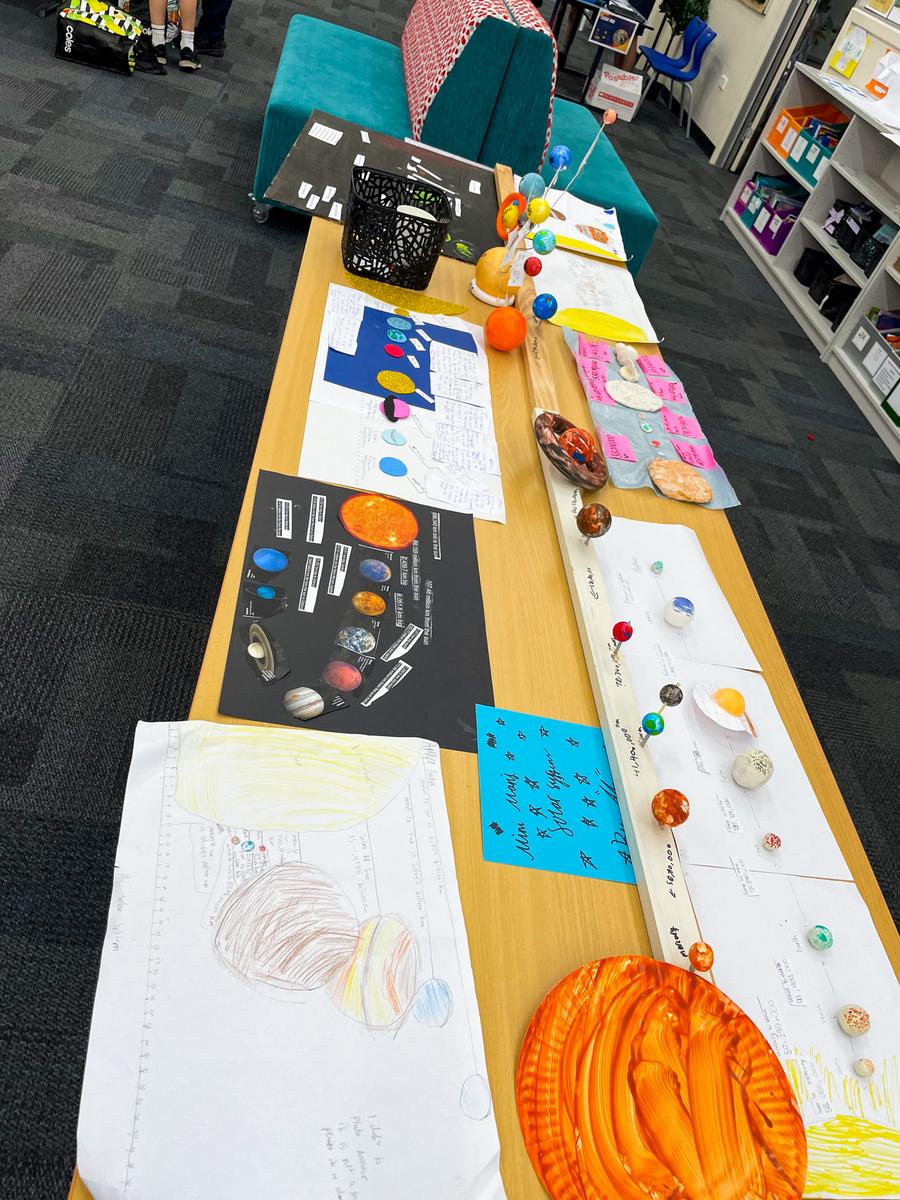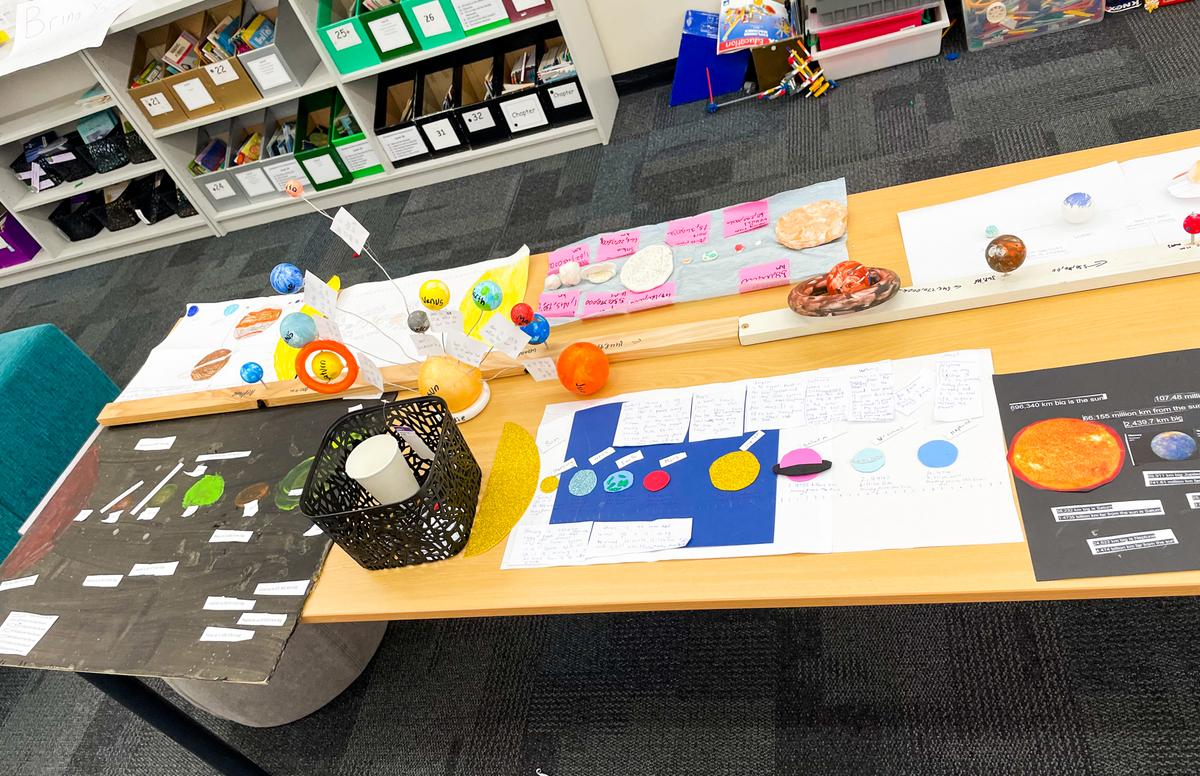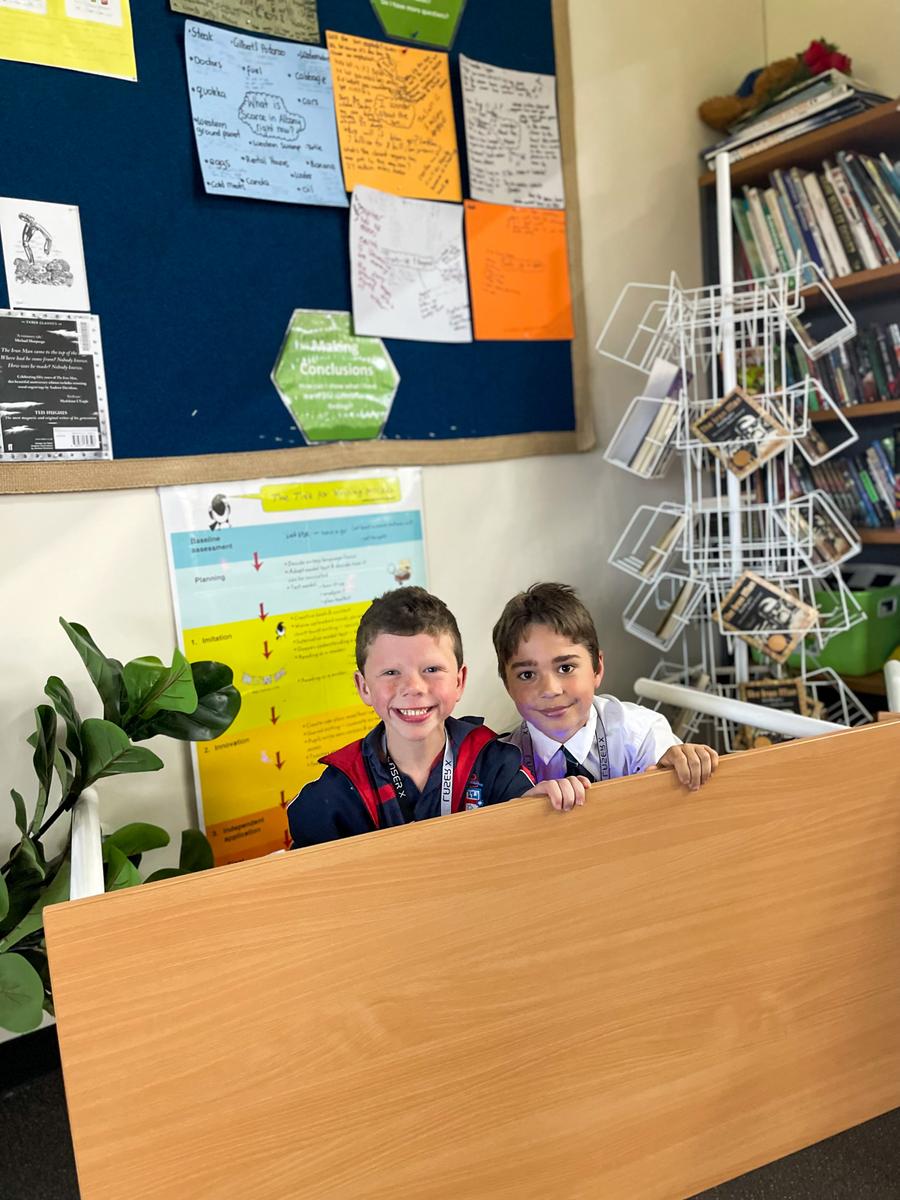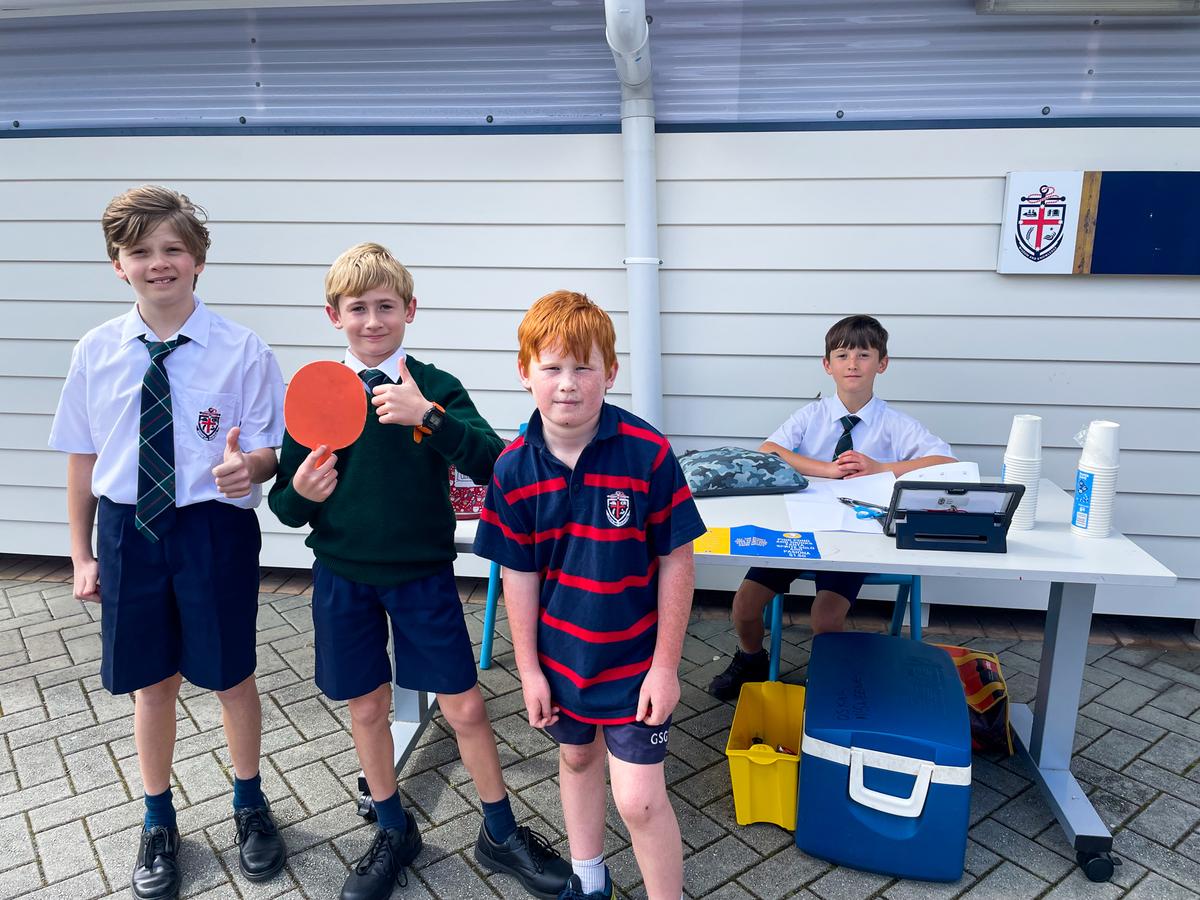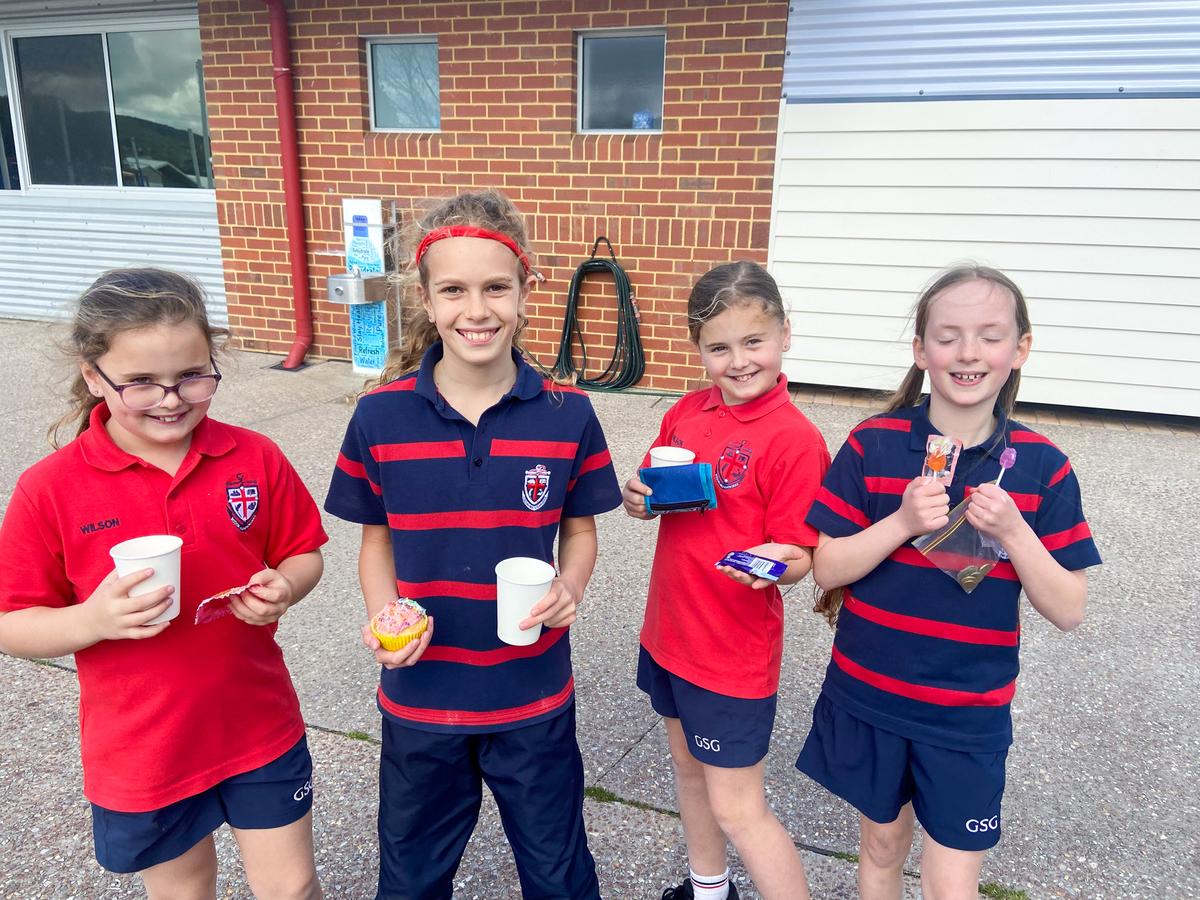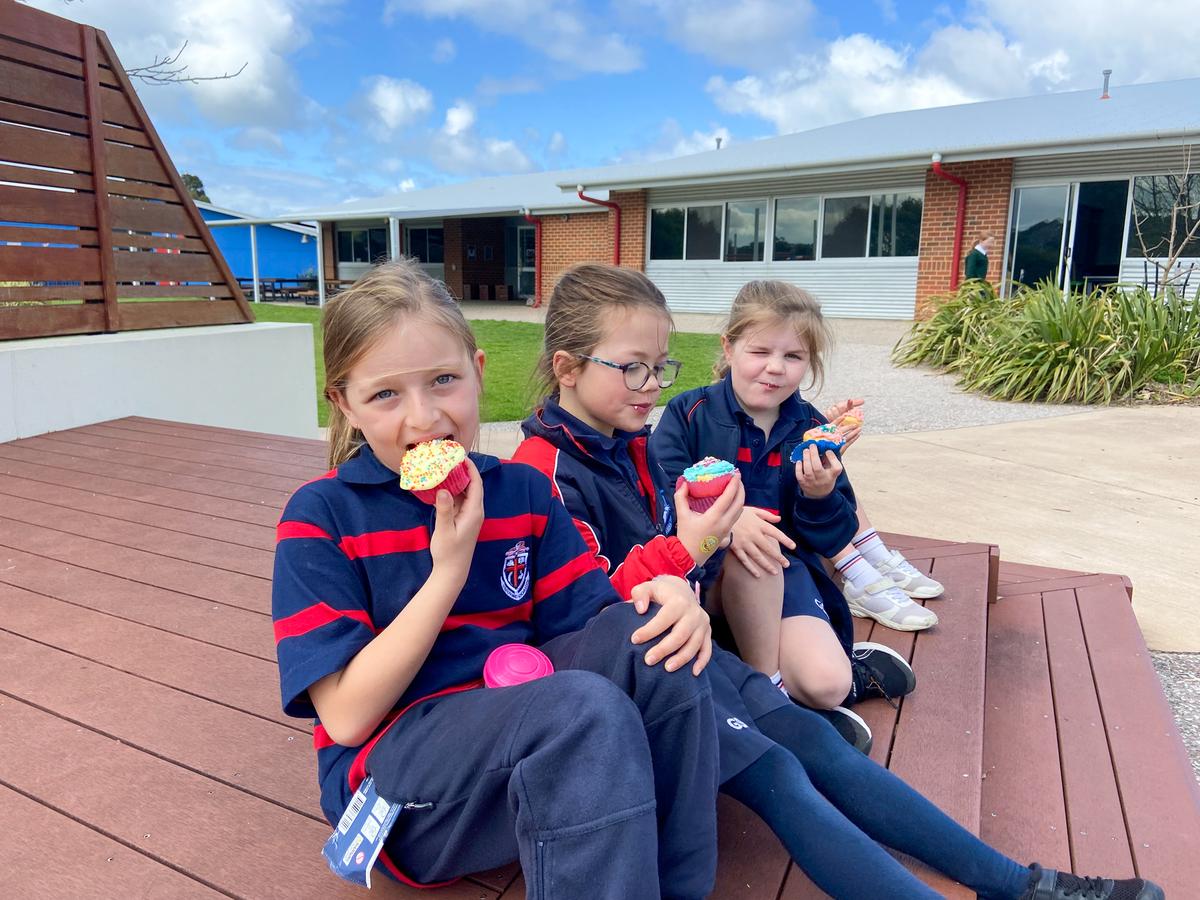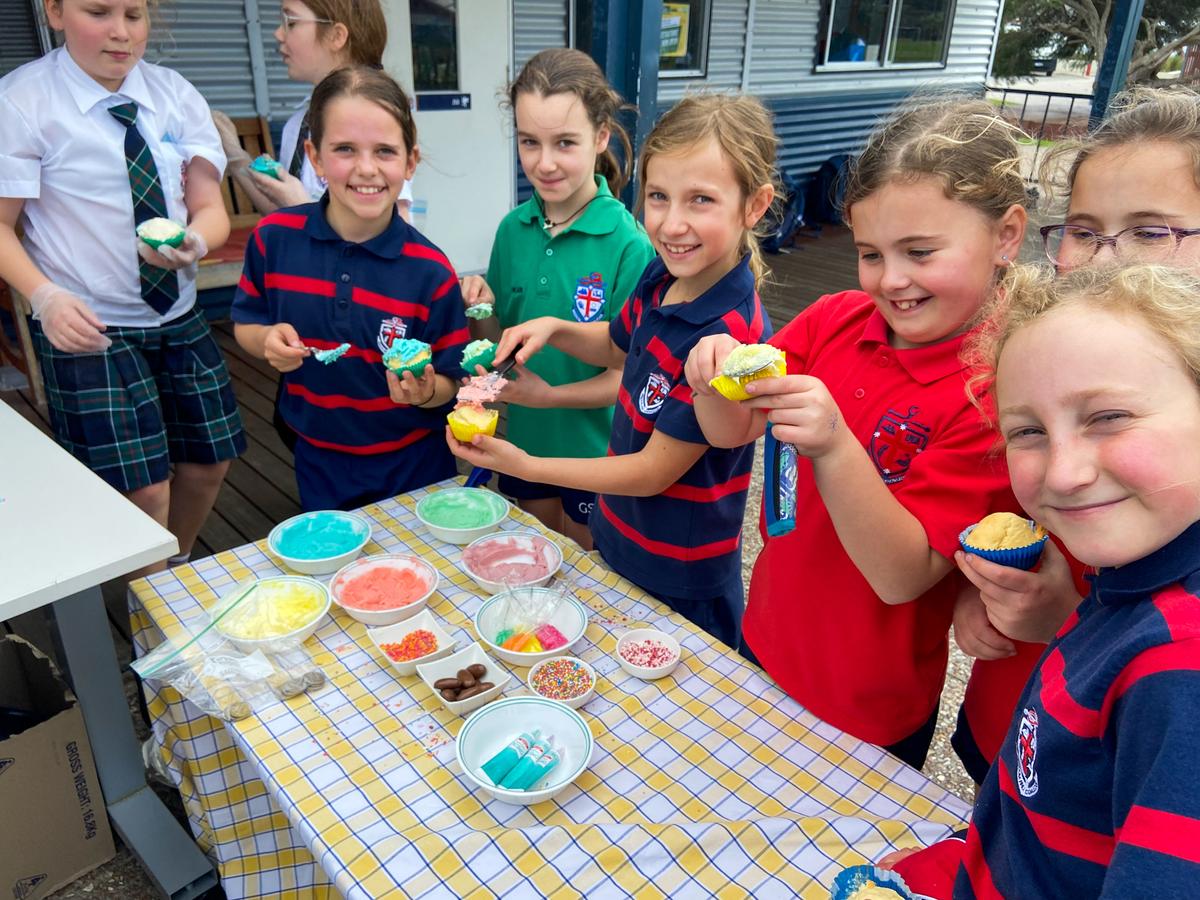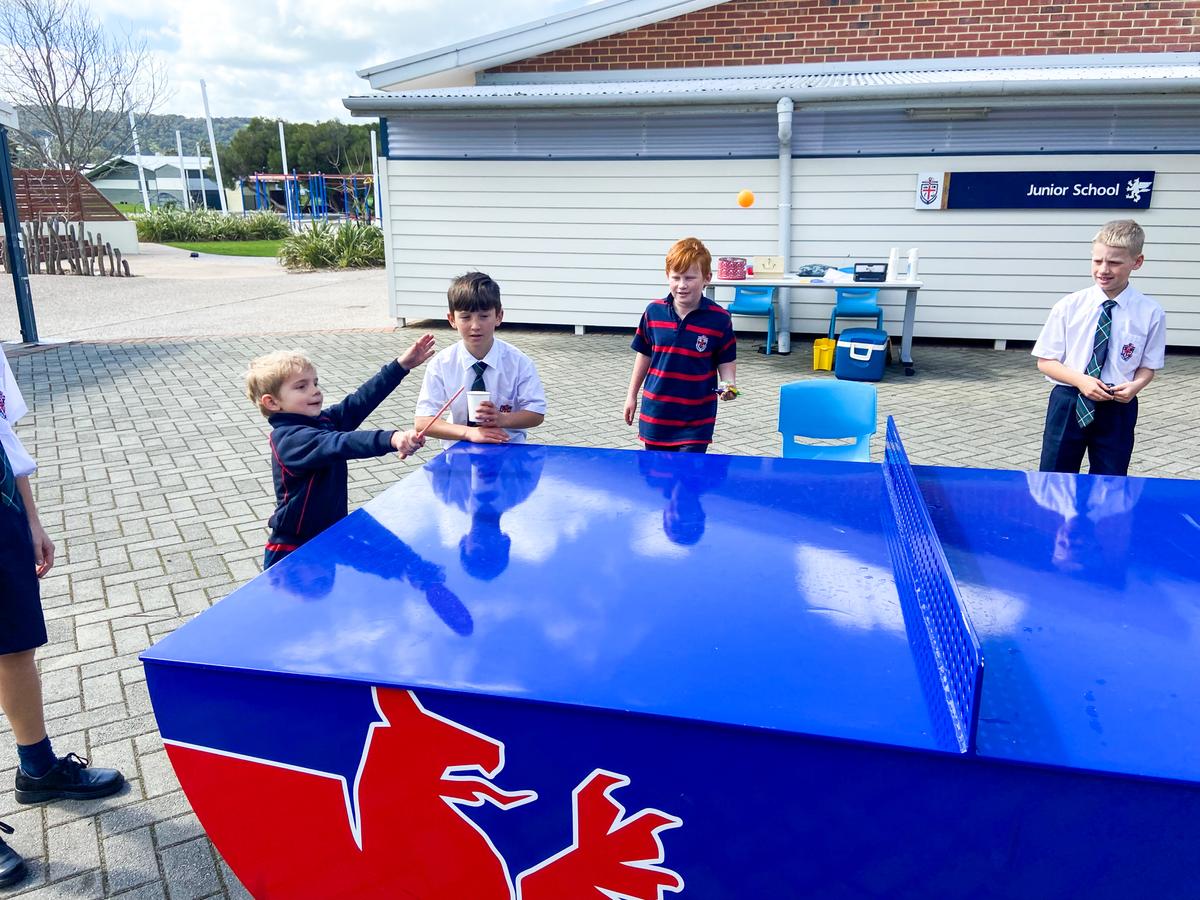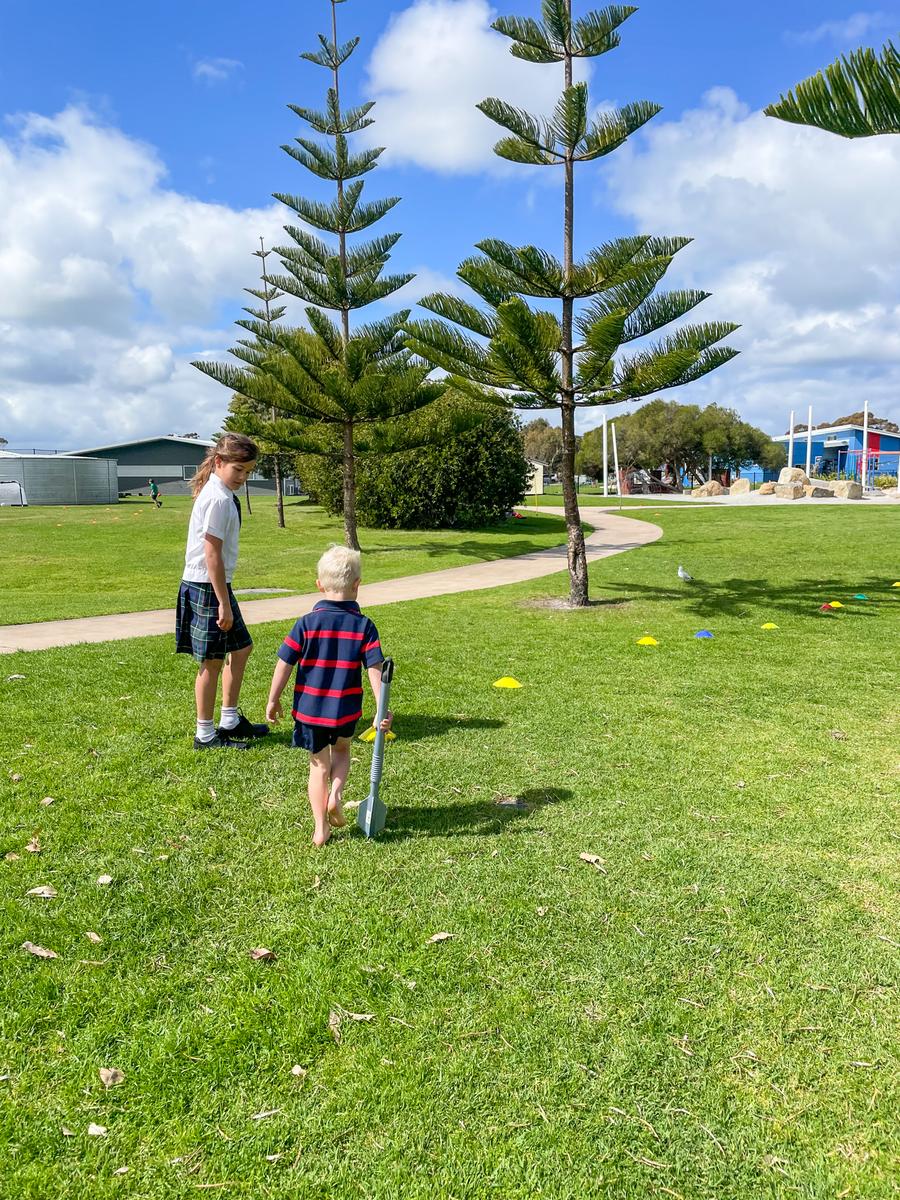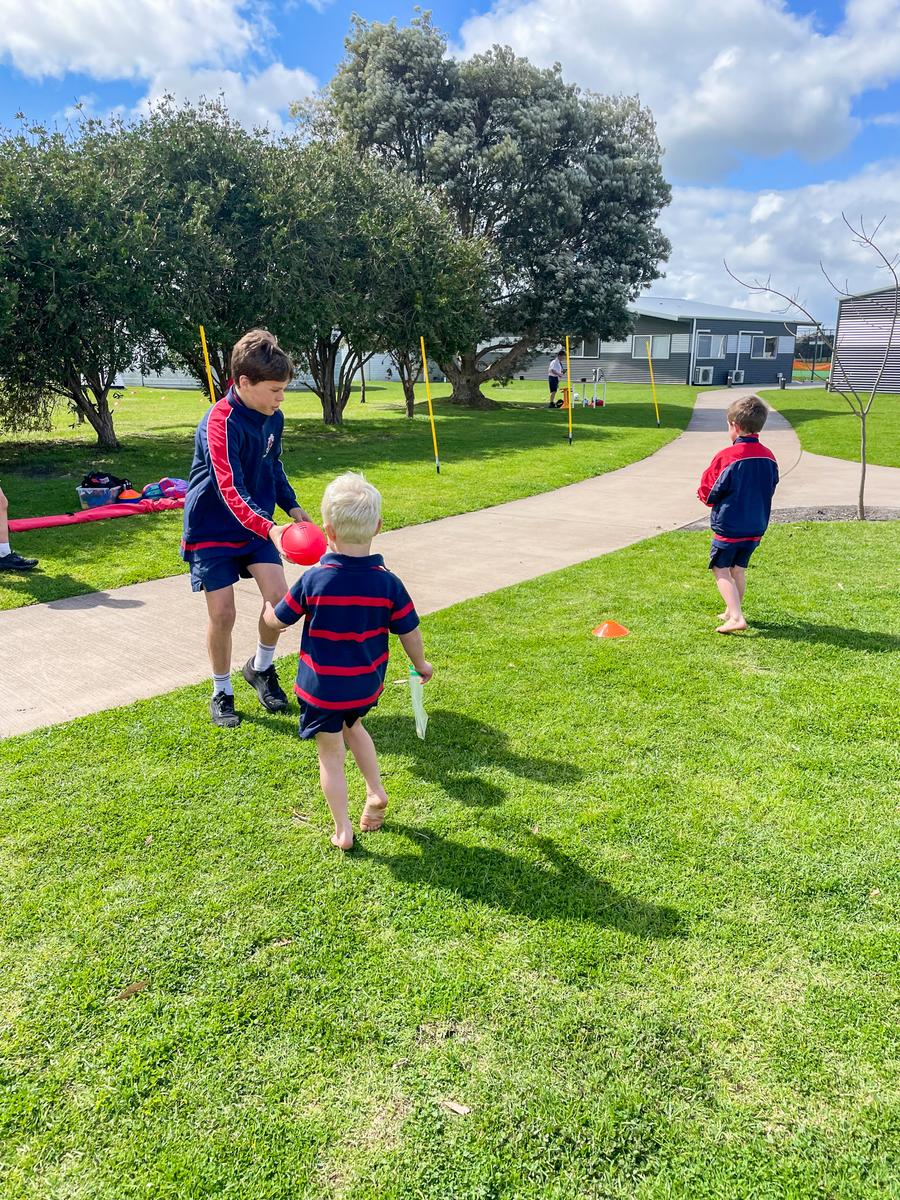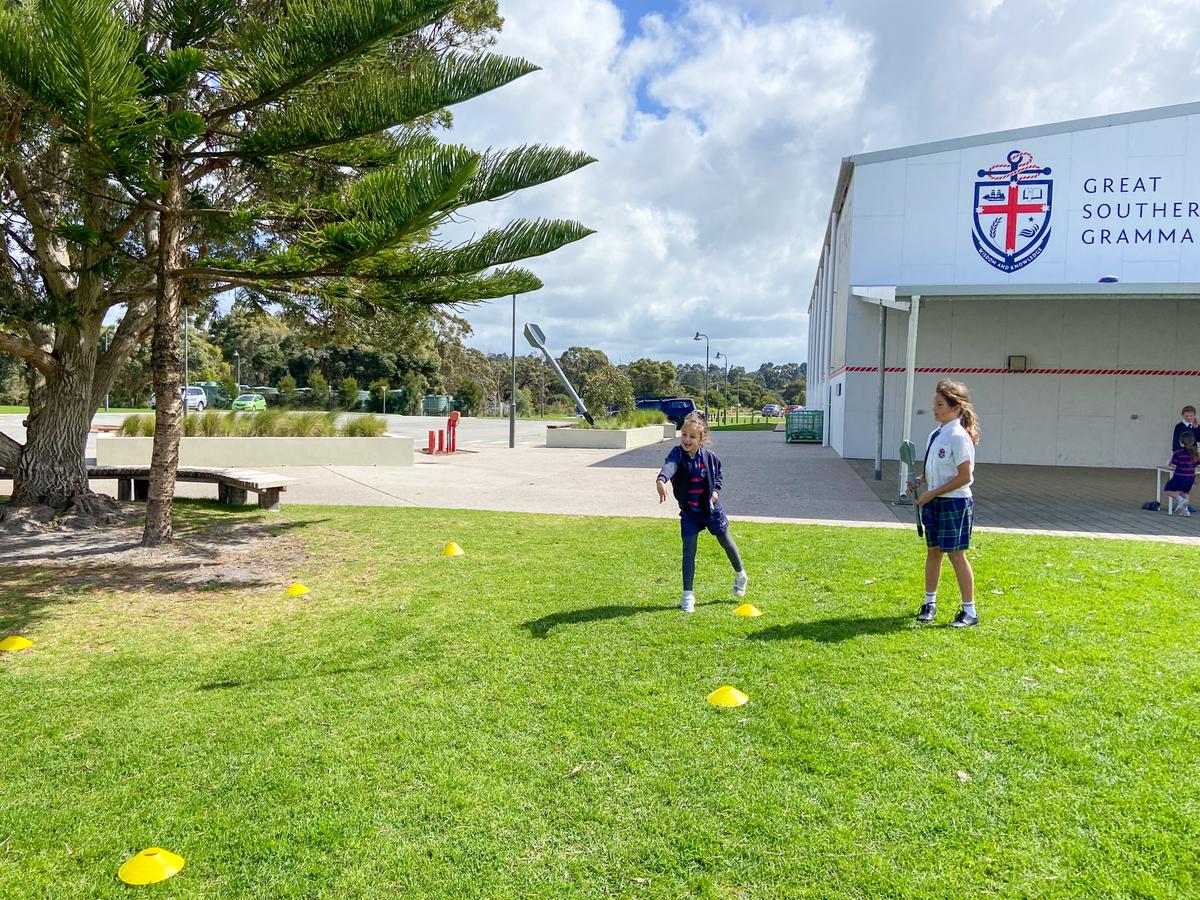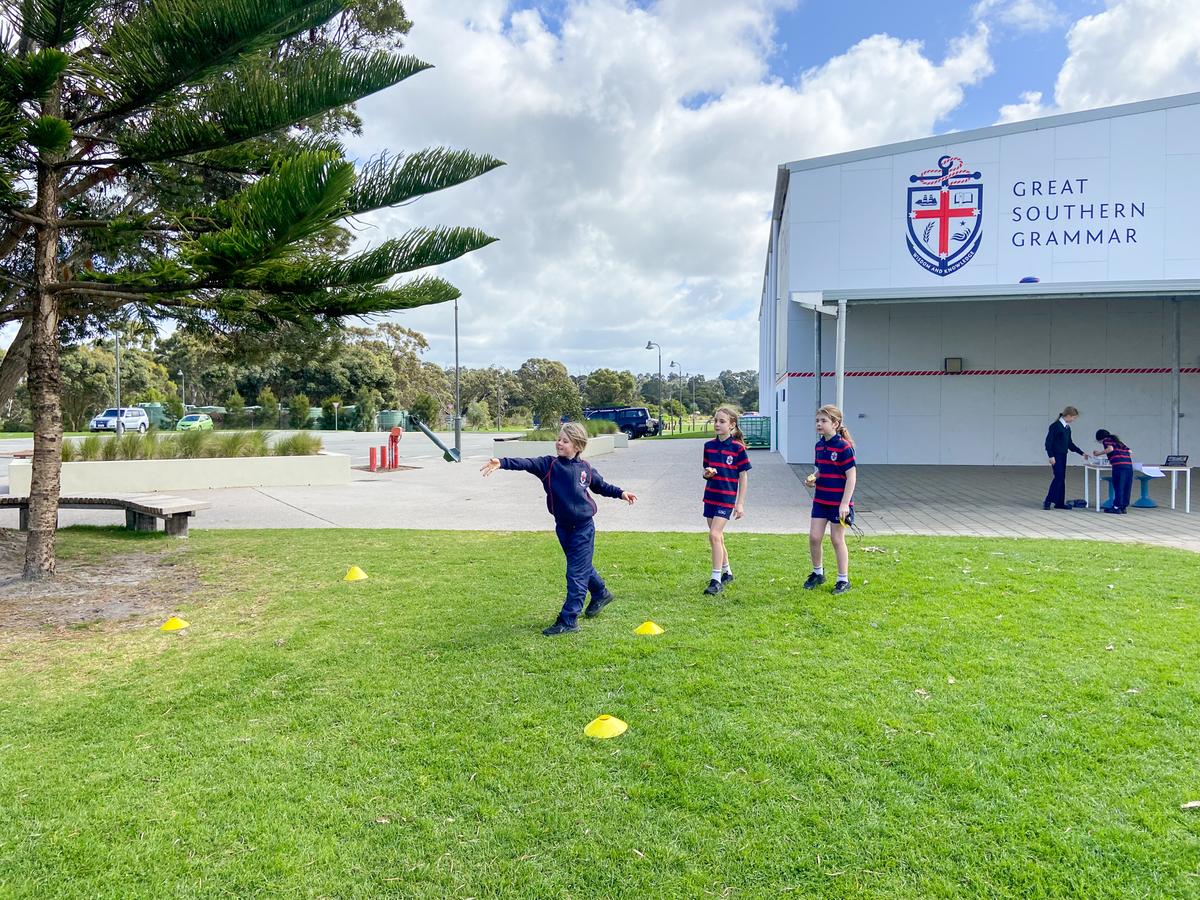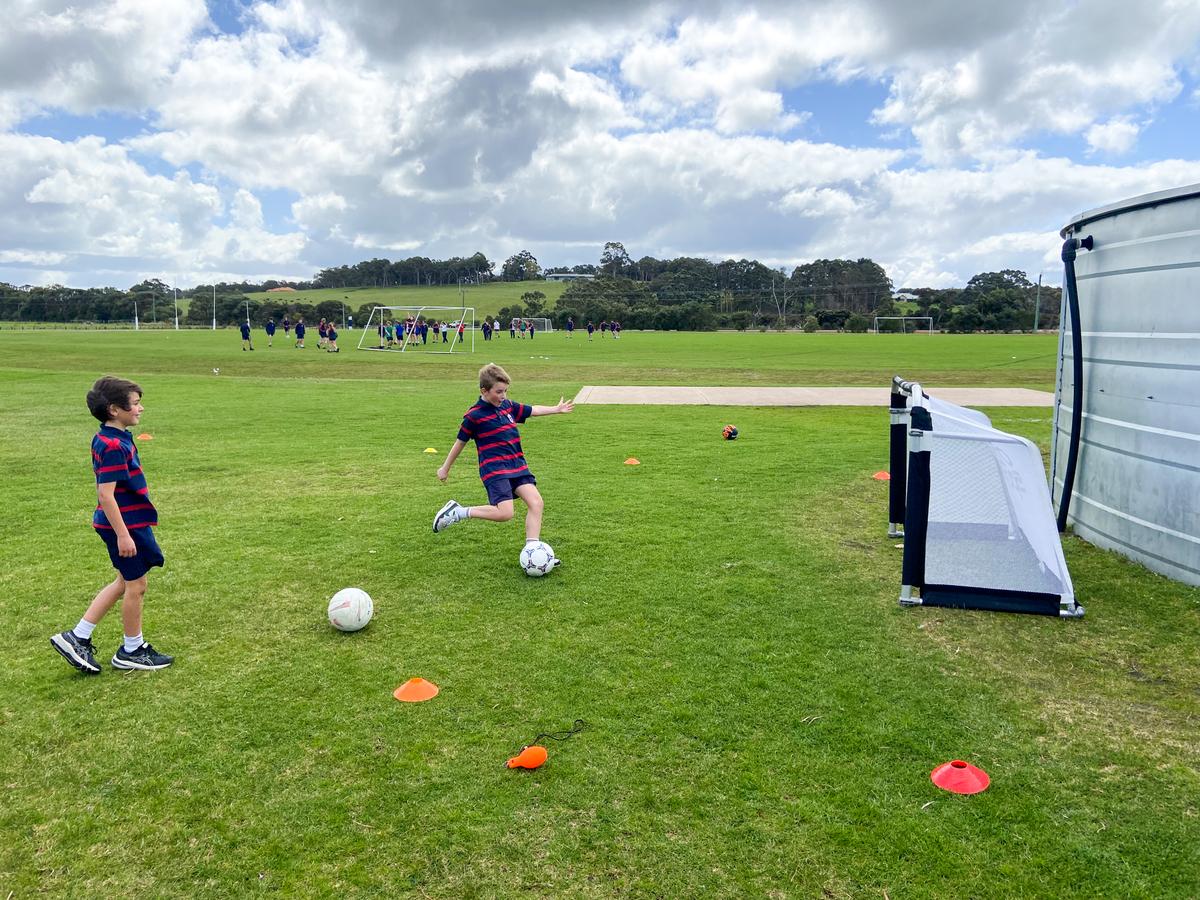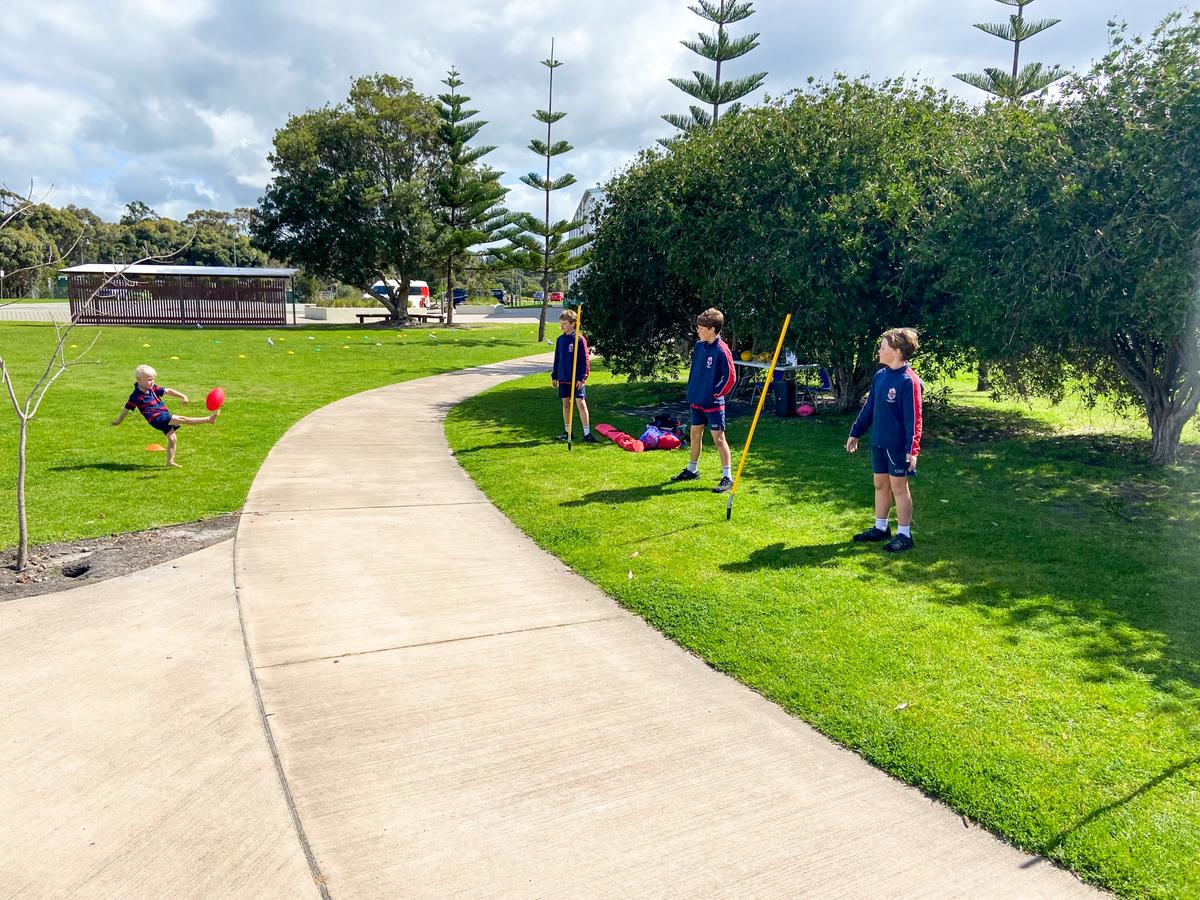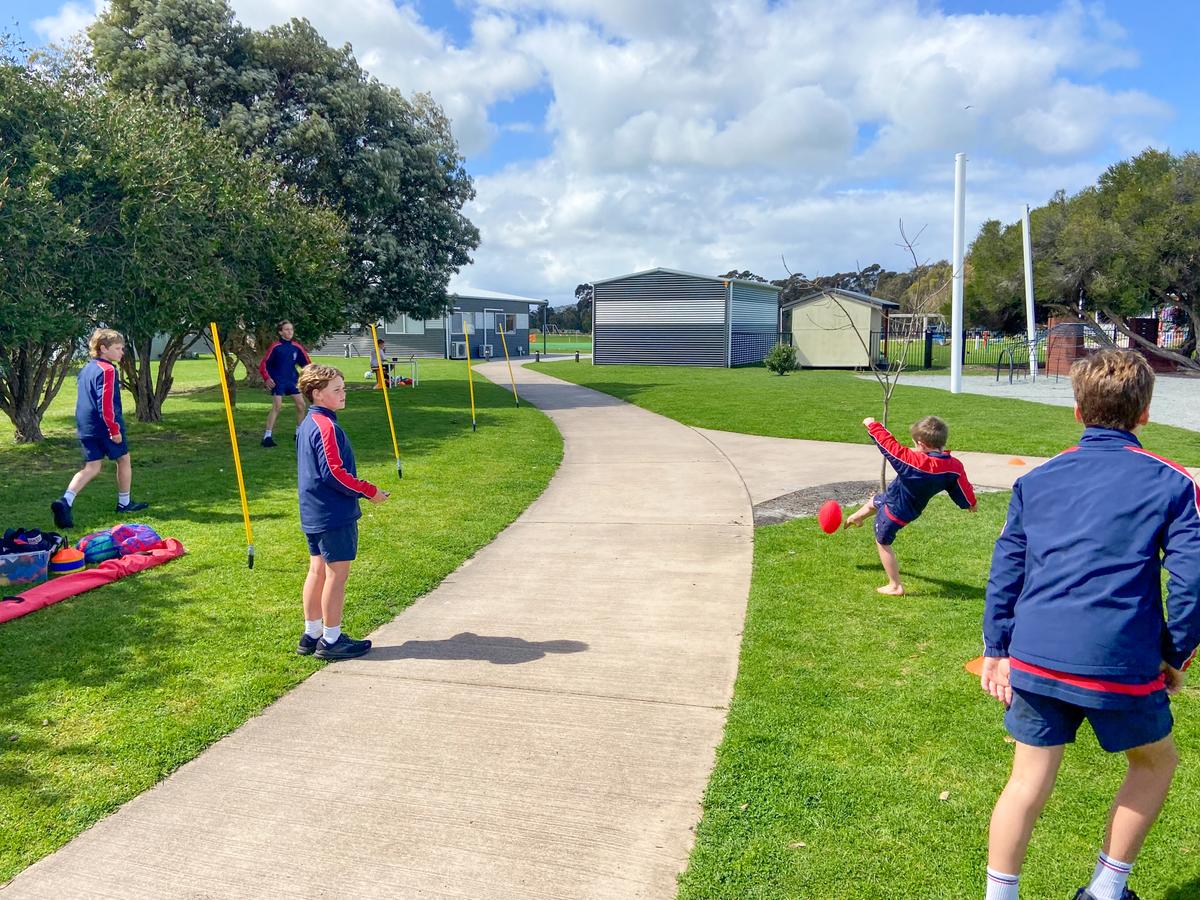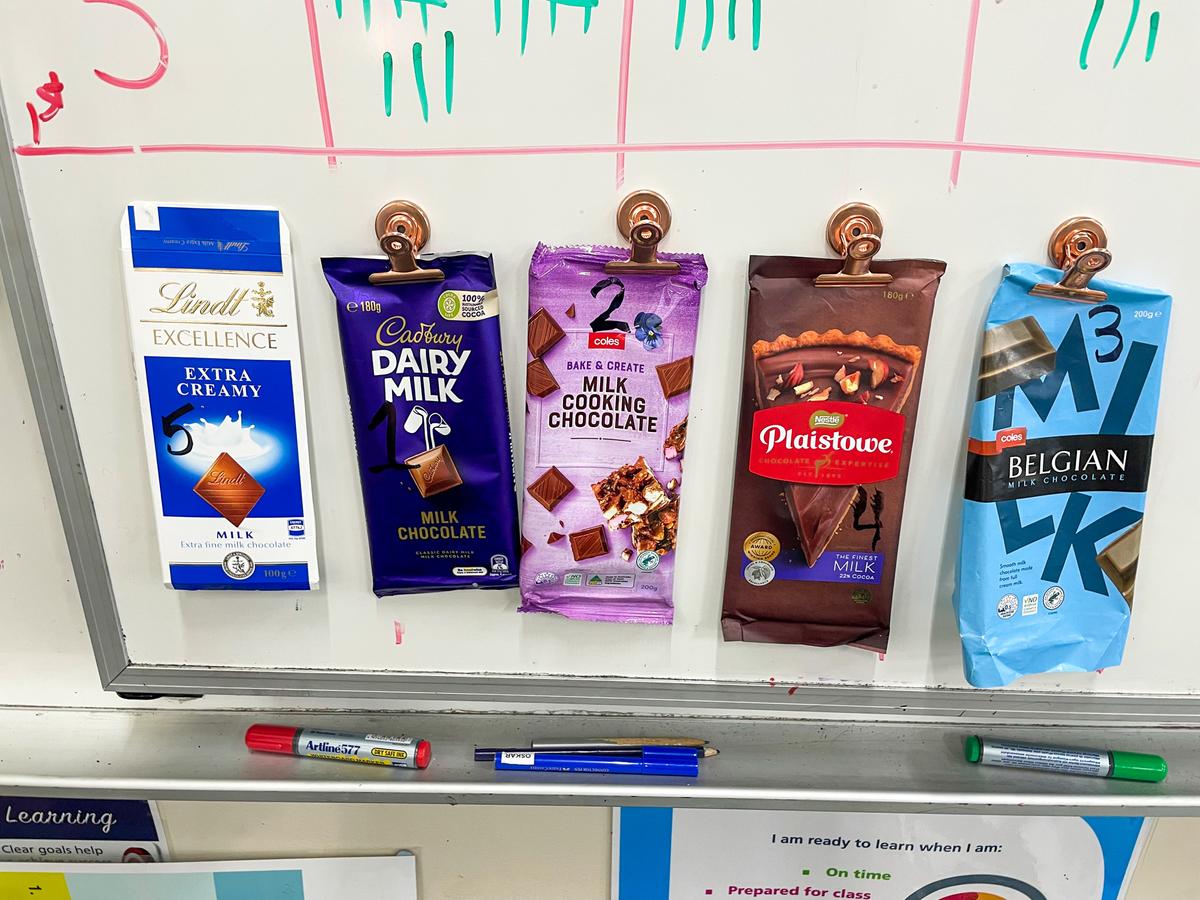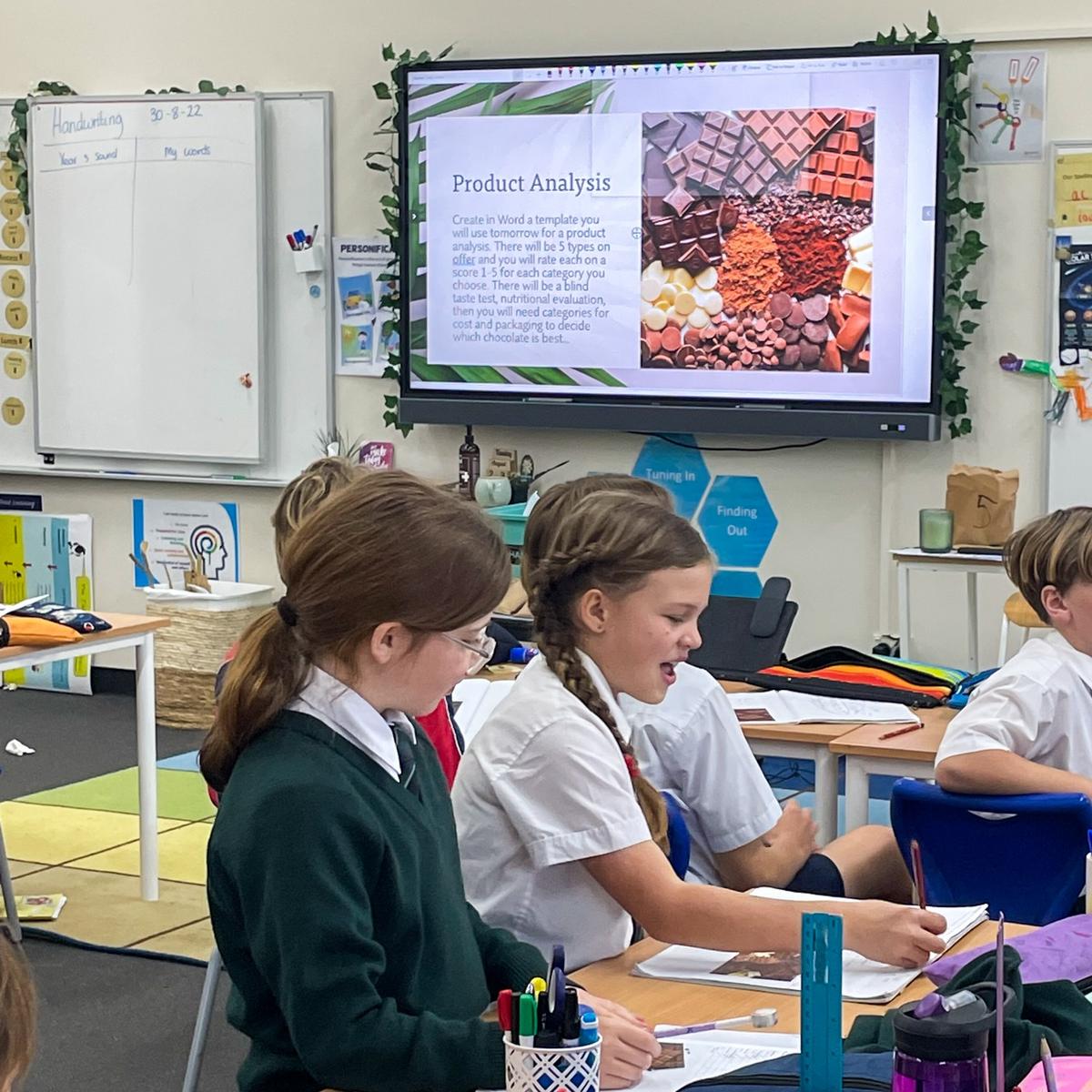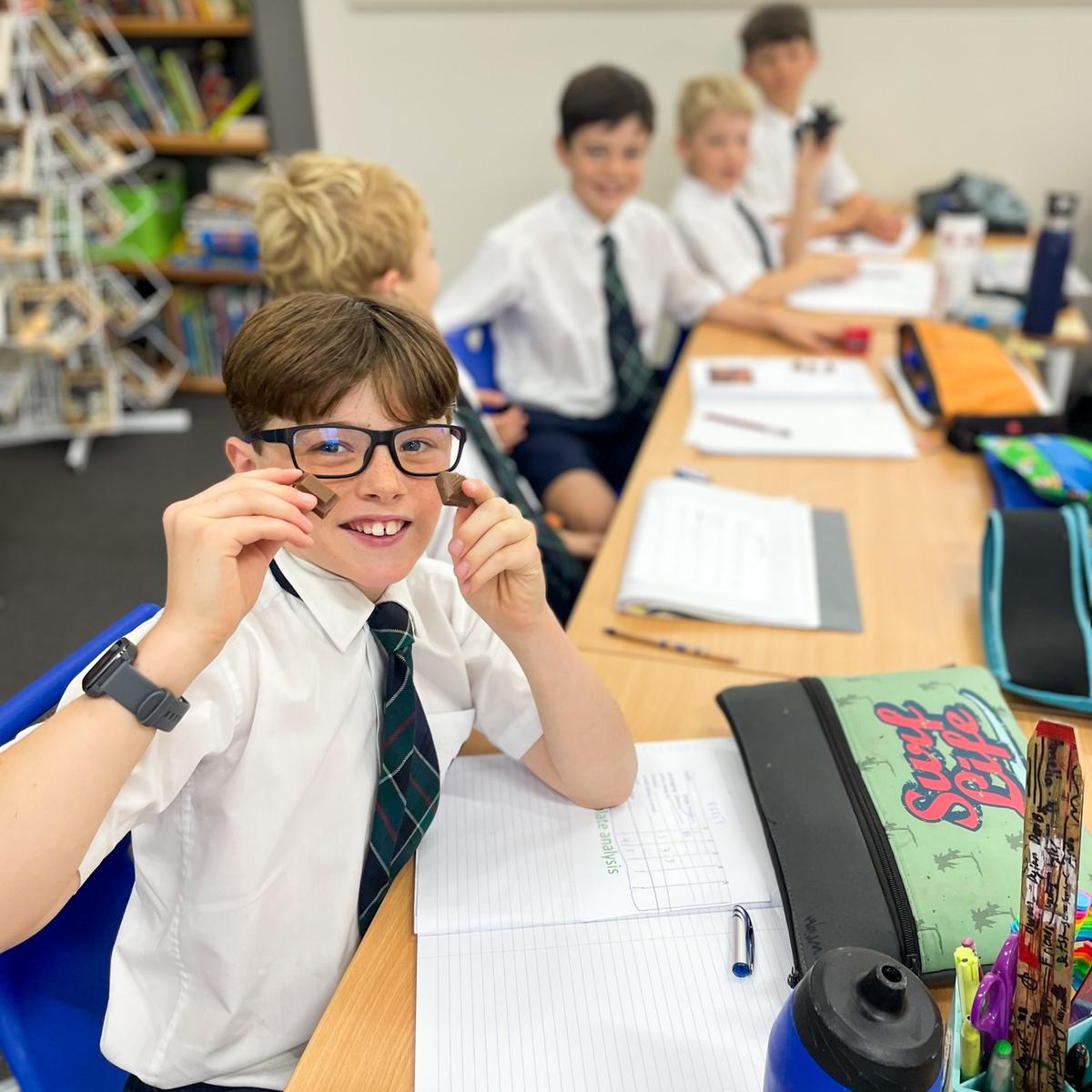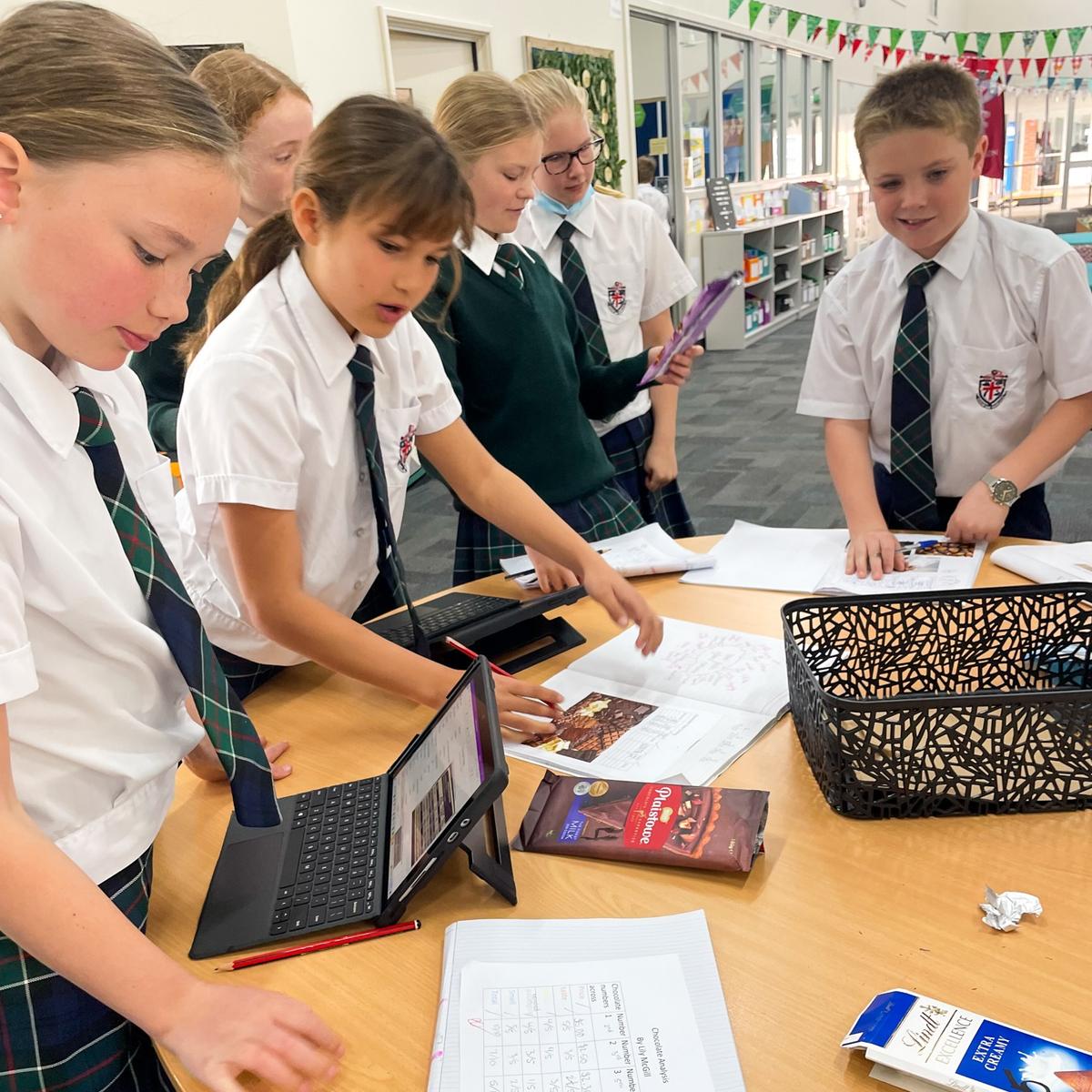Junior School

From the Head of Junior School
Year Five Marketplace Inquiry
On Wednesday, Year Five students held a marketplace for Junior School students to purchase goods and services for their enjoyment. For their inquiry into Sharing the Planet – allocation of resources, Year Five students have been exploring the subjects of Economics, Technology, Mathematics and English to research and design a market stall to sell goods and services for our Junior School community.
In Economics, students learned about consumer needs and wants, the concept of scarcity, what resources are, opportunity cost and capital allocation. Students then developed a business plan for their market stall that considered these aspects relative to our Junior School community from Pre-Primary to Year Six. Within the business plan, students applied their Mathematics knowledge to draft a budget (financial plan) of expenditure and projected sales to determine whether their venture would generate a profit.
For Technologies and English, students used design principles to map the delivery of their products or service, then compose a persuasive advertisement to generate interest in their stall. What has been particularly impressive about this inquiry is how relevant each of these aspects are to the ‘real’ marketplace economy we all participate in as adults, and whilst our Year Five are operating as a very early stage of understanding these complex concepts it has been wonderful to see how students engage in the principles and have changed their thinking from designing a market stall that they themselves would like to run into designing a market stall that will appeal to the consumer. That subtle shift in perspective could make all the difference to a successful venture in the ‘real’ world.
Just to re-cap the inquiry process. This is the fourth inquiry the Year Fives have undertaken for the year, which each inquiry following the same cycle process.
- Tuning in
- Finding out
- Sorting out
- Going further
- Making connections
- Taking Action
Tuning in, students interests in the inquiry are sparked with an experience or big questions to explore and we draw on prior knowledge to understand their current level of understanding around the inquiry topic. We’ll break down the inquiry statement or question to get a clear understanding for what we are about to explore and identify areas to focus on. This phase may be a single lesson or extend up to a few lessons or possibly a day.
Finding out, students engage in lessons, research and learning to gather information and understanding to build their knowledge and competencies around the inquiry topic. This phase may last for weeks and will cover many subject areas, this is a core area of knowledge building and use teacher resources, library resources, interviews/surveys, peers, guest presenters, excursions, web resources, anything the teacher designs and students suggest that will be helpful for their learning.
Sorting out, students review all their learning resources and consider what will be most relevant for their inquiry. In this phase students are recording what resources they have used as a reference to draw on and determining which areas they have enough information around and which areas they may need to explore further. In this phase we are referring back to the inquiry question or statement and determining whether we have enough resources to answer those questions thoughtfully. Often the ‘sorting out’ phase works alongside ‘finding out’ over many weeks.
Going further, students will have identified gaps in their inquiry from the Sorting Out phase or perhaps uncovered more questions they would like to explore further that will enhance their inquiry. This is a great phase for checking all aspects have been covered and extending themselves to ‘go further’ into particular aspects. This phase is typically shorter than finding out/sorting out but can span over a number of weeks still.
Making connections, students will draw together their knowledge and research to begin composing or constructing a culminating produce to showcase their inquiry learning. Making connections integrates the learnings from a range of subject areas to demonstrate a cohesive link to their learning. This can be varied depending on the age and nature of the inquiry, possibly drafting a report or portfolio, website, diorama, play or combination of many forms. This phase can typically last for one to two weeks but also be built upon from the beginning of the inquiry.
Taking action, students apply their knowledge and understanding. This can take a wide variety of forms depending on the students age and nature of their inquiry, but can be as simple as having a conversation about their inquiry to someone to demonstrate their understanding, or producing a product to explain their understanding (portfolio, poster, video, speech, organising an event, building a model, presenting a play, speech or debate). Taking action options are endless, its core value is applying their new understanding and sharing that with someone or an entire community.
Our inquiry approach is guided by the teacher throughout the process. Our students make contributions to their inquiry and are encouraged to offer additional lines of inquiry to explore, however we have a scaffolded structure for them to work through together. This modelling of the inquiry process between teachers and students builds their proficiency over time and confidence to approach tasks that are initially unfamiliar into manageable steps to explore and learn. A defining feature of the inquiry process that isn’t specifically labelled as a phase, but is evident throughout, is the level of excitement and engagement students have as they work through the inquiry. This is most noticeable at the taking action phase when they are sharing their learning, there is a definite ‘buzz’ to the air that is just delightful to be a part of for everyone.
This week our theme across the school has been a celebration of learning. Our approach of target teaching of literacy and numeracy for English and Mathematics across all age groups in the Junior School, complemented by an integrated inquiry for Humanities, Science, Languages, Art, Physical Education all where appropriate to their inquiry topic is a good example of celebrating a love of learning. Targeted teaching provides the building blocks of skills, knowledge and competencies that enable our students to explore further through inquiry at their age-appropriate levels. To students though, it's just all learning, and good fun, which is wonderful.
NAPLAN Results
Students in Years Three, Five, Seven and Nine will soon receive their results from this year’s NAPLAN testing. These will be available via SEQTA. It is important to note that NAPLAN results are only one tool used to assess student progress. Classroom teachers will consider NAPLAN results and compare them to student achievement at school, which gives us a broader picture of student progress. If you have any questions around the data and an update on student progress, please feel comfortable making contact with your child's classroom teacher.
With warmest regards,
Mr Ken Raven | Head of Junior School
Chocolate Analysis for Market Day
In the lead up to Market Day yesterday, the Year Fives completed a ‘Choice’ style analysis on five unknown milk chocolate bars as part of their Economics and Business studies. Looking at the factors that consumers consider before choosing a product, the students came up with a consumer choice rubric then conducted their assessments on the chocolates, rating each product on a 1-5 scale for each category. The first (and greatest) test was a blind taste test, followed by a nutritional analysis, use by date and price per gram comparison.
The final analysis saw the students look at the packaging for its ecological footprint and visual appeal. Lindt chocolate came out on top, followed by Cadbury. Interestingly, the cooking chocolate didn’t come last!
Mrs Leah Field | Assistant Head of Junior School



